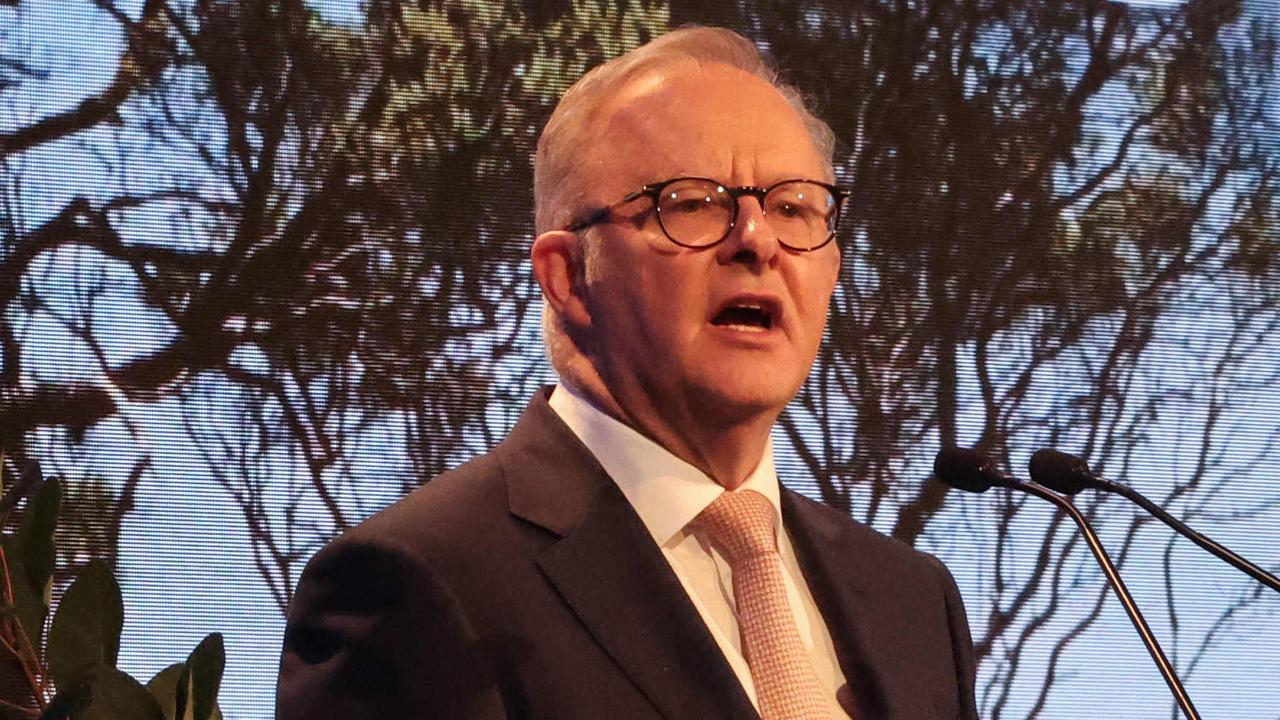The fast but silent rise of electric cars and motorbikes
They’re the future of motoring — but when Herald Sun journalists take an electric car and motorbike out for a spin not everything goes to plan.
Future Victoria
Don't miss out on the headlines from Future Victoria. Followed categories will be added to My News.
Nothing happens.
That’s the first lesson with an electric car. There are no keys to jiggle or gear stick to grip. No reassuring grunt from the engine when you nudge the accelerator pedal.
The handbrake is an electronic latch button, the transmission choices a little keyboard.
You tentatively prod the D button and tap the accelerator again. The car moves with the faint whirr of a warehouse forklift.
Around the corner, when the car dealer cannot see you anymore, you floor the pedal. Happily, this car is no forklift. It’s true what they say. Electric cars do take off. Fast.
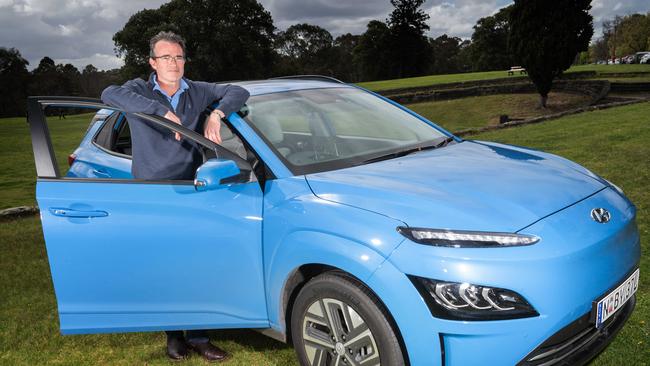
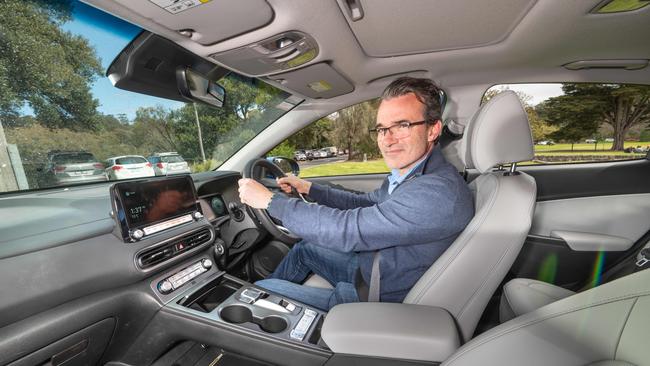
You get past the foreignness of those starting moments. Over the coming days, to start a car as if you are typing an SMS becomes normalised. An electric car isn’t lifted from The Jetsons. It performs according to most of the traditional measures. And it boasts advantages – and disadvantages – of the driving experience that become clearer on the road.
This story brief was simple. Drive an electric car down the Great Ocean Road. See how it handles. Analyse, for dummies, what the future of motoring looks like.
You are a car dummy. When a mechanic talks about a diff or pump, you steer the chat to footy.
You know even less about electric cars, except that their silence presents pedestrian perils, and their owners are trailblazing the prescribed future of charging stations and plug-in power.
Herein lies the first problem. You must learn fast. The car, a Hyundai Kona EV Highlander, runs to about 470km on a full battery.
This is ample battery charge for driving around the city, which requires only an occasional overnight charge in the garage. It’s cheap, too, with charging costs less than a third of the price of petrol refills.
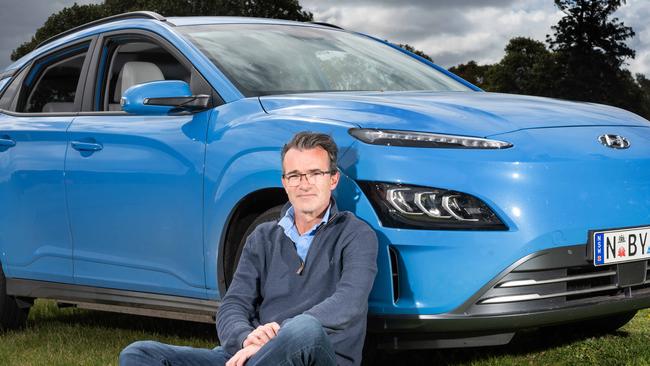
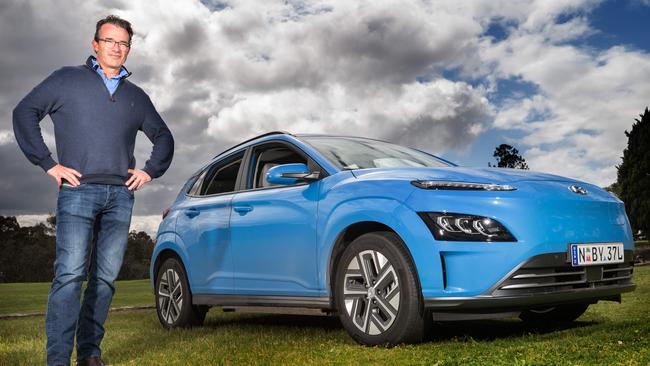
But the benefits fade when you want to head to Port Fairy, which is inconveniently placed 300km away. The most westerly public charging station near the coast – where a full recharge takes hours, not days – for your car is in Torquay. This limitation brings on an attack of what electric car drivers call “range anxiety”.
Port Fairy cannot be reached, not unless you want to sit around for the car charge to catch up. The umbilical cord of electricity tethers the possibilities. Like an age-old horse, the long distance car of tomorrow needs to rest (or charge) overnight. Back to the future, it seems, is no friend of spontaneity.
The car’s demands trigger a scheduling change. Let’s head for Apollo Bay instead. That’s 211km away. Hope for a hotel which will allow cords to dangle overnight from the front of the car to a conveniently-placed electric plug.
If not, you can drive (the wrong way) to Torquay, a nice town which is not on the Great Ocean Road. Yet Torquay boasts the advantage of being only 91km away from Apollo Bay and hosts a charging station.
That’s the next lesson about an electric vehicle (EV). It can take you places you want to go, and even places you do not. The parameters of the road trip have been set by the limits of the technology.
Advances emerge every year – more charging stations, longer lasting batteries. The Electric Vehicle Council dismisses range and charging time concerns as “myths”, arguing that a car’s charge life meets the weekly needs of most Australians.
Which it does, on average, even if the stats do not eliminate the doubts. A recent British poll found 85 per cent of motorists worried about the distance range of batteries and a lack of charging opportunities.
The results support “range anxiety” as a psychological thing, to be compared with a fear of flying or crowded confines. It’s part of the EV lexicon, alongside “regenerative braking” and more abbreviations than a social media dictionary.
If the EV runs out on a deserted highway, you cannot lug a jerry can to the closest petrol station. Instead, the car must be lugged (or towed) to a charger. This fear tends to undermine the “unplanned adventure” claims of the car manufacturer’s spiel.
You deal with your range anxiety by stopping off at a Woolworths in Geelong. Three extension cords at $6 each. This need to plan, to fuss over Google maps and a charger app and mull over the uncertainties, is an everyday reality of any EV road trip.
Like most new cars, electric or not, this one is bossy.
The car tells you when you drift from the lane, another car approaches, the cars ahead take off at traffic lights, and when you fall into bad driving habits. Keep your hand on the wheel, the car demands, in what becomes a contest of wills.
No doubt all these gizmos can be silenced. The lane drift beep, assuredly helpful in city streets, is an unwelcome soundtrack on the hairpin turns of the Great Ocean Road.
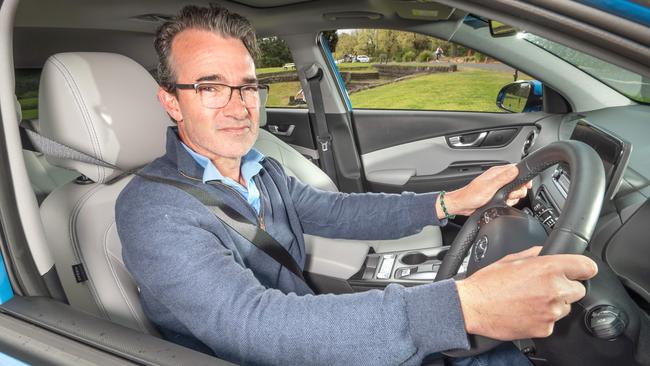
The car has a heads-up display, which tells you the speed limit and changes the colour of your speedo, from white to orange to red when you speed.
The car reminds you to check the rear seats when you get out, and will beep loudly if a moving (and potentially unseen) vehicle approaches when you open the door. For nag, this car is a mother-in-law.
Under the bonnet, the usual clutter of bits and bulges are replaced by streamlined machinery. There is no fuel tank, fuel pump or fuel tank, so of course there is no exhaust emission. The mysterious bits that make this car work – encased boxes such as the electric traction motor and the power electronics controller – do not fill the cavity.
But the point ought to be made. Besides the stress of planning your next charge, an EV drives much the same as a petrol car. Perhaps better, in some comparisons.
The absence of engine noise is a big advantage, like being in first class as opposed to economy.
At Gibson Steps, near the 12 Apostles, you look to turn right on to the Great Ocean Road. There is a rise in the road to the right, and a car careers down the hill as you pull out.
You reflexively push hard on the accelerator – past the point of no return – and the car responds immediately. The electrical response spares you a hairy moment, if not the horn of the approaching car.
The car kicks on winding hills and slows if you approach the car ahead. It offers technological safety nets for the basics of driving safety. Yet you do feel in charge. If she’s a mother-in-law, she’s also on your side.
Electric cars are the looming Australian motoring revolution most of us have ignored. They draw questions from latte-sipping strangers in beachside towns because of their novelty. This is the major problem of driving one.
There is no federal strategy to promote their use, and few incentives to spend far more on a car which is better for all of us.
In Victoria, the state government has introduced a world-first 2.5c a kilometre road tax on electric cars, which sounds a lot like charging extra for broccoli because it is good for you.
Electric cars represented less than one per cent of new car sales in Australia in 2020, compared with world leader, Norway, where almost six in 10 new car sales are electric, largely because of the massive tax savings offered there.
Drivers in some countries choose from 130 different models, whereas here – in part because manufacturers understandably doubt the market – there are 30-odd models.
Most of them cost more than $65,000. The example of the Hyundai Kona is instructive – the EV version costs almost double the petrol one. In Norway, an electric Volkswagen Golf costs less than the petrol one because of tax subsidies.
Familiarity with EV mechanics, virtues, and differences is low in Australia, which has the slowest uptake in the developed world.
Yet EVs will be a central pillar of any national energy emissions policy. They’ll happen whether you want them to or not. As one major European car maker has said, Australia is the “automotive Third World”.
We get lucky with the Apollo Bay hotel, although the manager points out that the cords are a tripping hazard and would we mind if they charge for the electricity we are sucking up on the socket.
It’s not quite the freedom of the open road long celebrated in motoring history.
The EV infrastructure of today does not meet the promise of tomorrow. It will, one day.
In the meantime, anyone who wants to make an electric car road trip can do so, if they are methodical enough, but they must factor in contingencies that petrol guzzlers do not demand.
Fifteen dollars for the power, $18 for extension cords, and more planning than a Virgin Galactic flight to space.
This is today’s price for the freedom of the future.
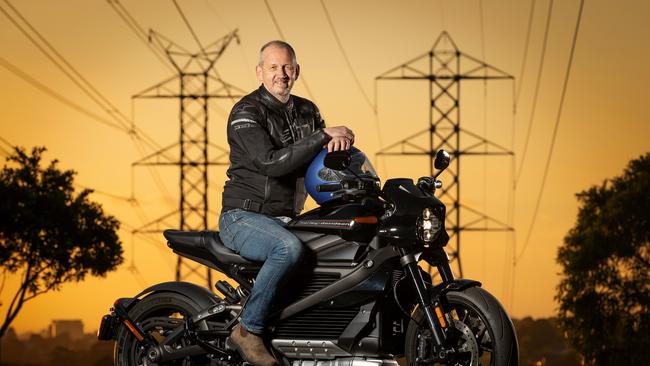
IS THIS THING STILL ON?
It doesn’t look like a Harley. And it certainly doesn’t sound like one. In fact, it hardly sounds like anything at all.
The all-electric Harley-Davidson is here.
The American company, best known for large and noisy motorcycles, hopes the silent Livewire will revolutionise the bike market and that its clean, cheap-to-run convenience will help counter congestion in big cities.
Other manufacturers from Japan to Italy and the UK are years away from releasing a range of electric models and are still talking concepts and prototypes.
But this Livewire is in dealerships and on the road.
And on the road, it’s a smooth and responsive experience. There are four ride settings – sport, road, rain and eco – which are noticeably different in terms of throttle and traction control. And if that’s not enough, customised settings are an option.
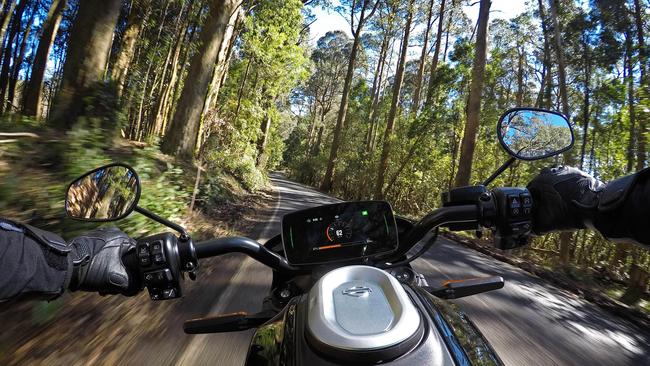
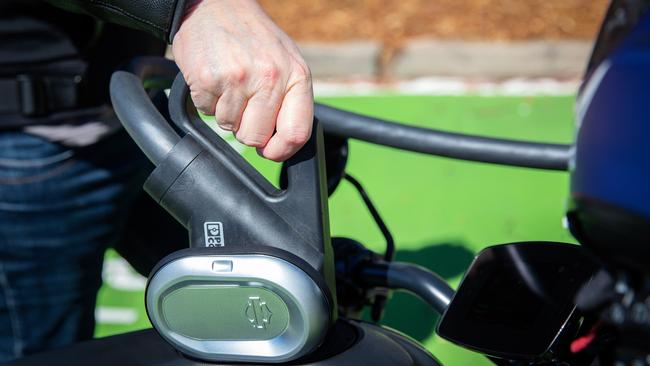
The acceleration is remarkable – the company says 0 to 100kmh in three seconds – and perhaps more importantly the stopping capacity is equally impressive.
The range from full charge is quoted to be about 243km in the city but 115km for freeway riding. The latter could be a problem if you want to go for a trip to the country so some planning for charge station destinations is essential – but of course, like most things in modern life, there’s an app for that. Indeed, a few apps.
Riding the Livewire, it can be an unsettling experience sitting at the lights in silence. Is this thing still on? A subtle regular throb from the electric power unit serves as a reminder of the bike’s twin-cylinder Harley pedigree.
No gears and no clutch means it’s a twist-and-go takeoff from those lights.
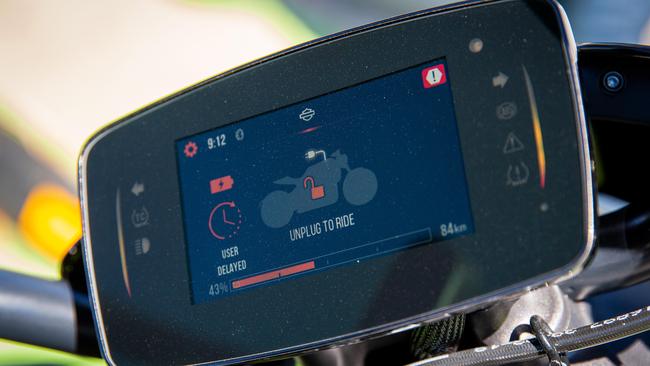
Motorcyclists live for winding country roads, otherwise known as the “twisties”. And in this setting, the Livewire handles like a sports bike. Agile, well-balanced and slick. And a lot of fun.
At $50,000, it’s not cheap and the limited range could prove to be an issue for any country jaunt, but prices should come down and ranges go up.
Harley has since sliced off its Livewire operation into a separate company and brand.
The major manufacturers’ slow move on electric models has opened up the door to independents.
Melbourne-based Savic Motorcycles hopes to release its first models late next year to become Australia’s first zero-emissions electric motorbike manufacturer.
Its entry-level Omega model will be priced at $12,990.



